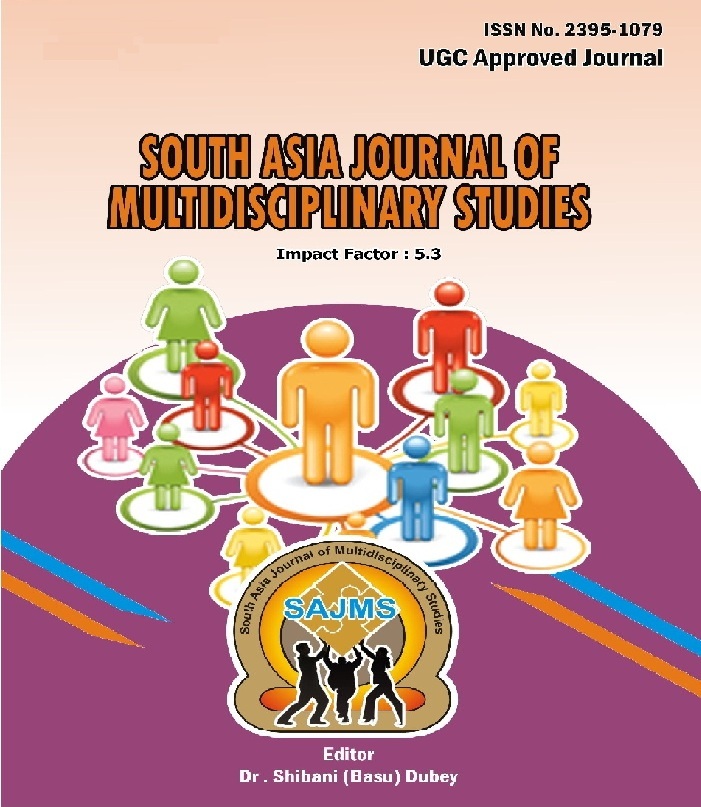INSTANCES OF CAMOUFLAGE (MIMICRY) OBSERVED ON THE FERGUSSON COLLEGE HILL
Keywords:
Mimicry, Mimic, Model, Camouflage.Abstract
Mimicry is basically a similarity of one organism to another which protects one through its effect on the behavior of the operator (third party). This similarity can be in appearance, behaviour, sound, scent or location. It is however important to note that the mimics are found in the same area as their models. In most cases, mimicry is advantageous to the mimic and harmful to the receiver. It may have beneficial, detrimental or no effect on the fitness of the model too. This project was aimed to observe and record various instances of mimicry in the area encompassed by the Fergusson College campus. Most of the visits were made in the morning hours, from 07:30 hours to 11: 00 hours and few were made in the evening hours, from 18:30 hours to 19:30 hours. For identification various identification keys were used, such as: Introduction to the Identification of Insects and Related Arthropods (P.M. Choate, 2003), Key to Insect Orders (Colorado State University) and the field guide Birds of the Indian Subcontinent (Grimmett, Inskipp, Inskipp). It was inferred that order Orthoptera that of the Grasshoppers was the most abundant order. The least observed individuals were Plant Hoppers and Spotted Owlets belonging to the orders Hemiptera and Strigiformes, this could possibly be due to the greater degree of camouflage that they exhibit. The number of individuals may vary according to the season and time of visits. We carried out the survey in the months of December and January.References
Birds of the Indian Subcontinent - Richard Grimmett, Carol Inskipp, and Tim Inskipp
Published by Bloomsbury Publishing (UK) 2012-01-19, London (2012) ISBN 10: 1408127636
ISBN 13: 9781408127636
Biological mimicry - Christopher Kwan,2009
Choate P.M.2003.Introduction to the identification of insects and related arthropods. Available
from: http://entnemdept.ifas.ufl.edu/choate/insectid.pdf
Henry Walter Bates, Esq., XXXII. Contributions to an Insect Fauna of the Amazon Valley.
1860.tb00146.x
Johnsen S. Hidden in plain sight: the ecology and physiology of organismal transparency. Biol
Bull. 2001 Dec;201(3):301-18. doi: 10.2307/1543609. PMID: 11751243.
Heredity 9 (1955): 323-342.
Merilaita S. Crypsis through disruptive coloration in an isopod. Proc Biol Sci. 1998 Jun
Mugleston, J.D., Naegle, M., Song, H., Bybee, S.M., Ingley, S.J., Suvorov, A., & Whiting, M.
(2016). Reinventing the leaf: multiple origins of leaf-like wings in katydids
(Orthoptera : Tettigoniidae). Invertebrate Systematics, 30, 335 - 352.
doi: 10.1146/annurev.es.13.110182.001125. [CrossRef] [Google Scholar]
Early evolution and ecology of camouflage in insects. Proc Natl Acad Sci U S A. 2012 Dec
;109(52):21414-9. doi: 10.1073/pnas.1213775110. Epub 2012 Dec 12. PMID: 23236135;
PMCID: PMC3535654.
(Wiley-Blackwell, 2017).
Species of Triatominae (Hemiptera: Reduviidae), Journal of Medical Entomology, Volume 10,
(1952)
Ruxton, G. D., Sherratt, T. N. & Speed, M. P. 1.8. Masquerade in Avoiding attack: the
evolutionary ecology of crypsis, warning signals and mimicry (eds Ruxton, G. D., Sherratt, T.
Ruxton GD. Non-visual crypsis: a review of the empirical evidence for camouflage to senses
other than vision. Philos Trans R Soc Lond B Biol Sci. 2009 Feb 27;364(1516):549-57. doi:
1098/rstb.2008.0228. PMID: 19000976; PMCID: PMC2674081..
Stevens M, Merilaita S. Animal camouflage: current issues and new perspectives. Philos Trans
R Soc Lond B Biol Sci. 2009 Feb 27;364(1516):423-7. doi: 10.1098/rstb.2008.0217. PMID:
; PMCID: PMC2674078.
Stuart-Fox D, Moussalli A, Whiting MJ. Predator-specific camouflage in chameleons. Biol
Lett. 2008 Aug 23;4(4):326-9. doi: 10.1098/rsbl.2008.0173. PMID: 18492645; PMCID:
PMC2610148.
Wallace A.R Darwinism. An exposition of the theory of natural selection with some of its
applications.
Downloads
Published
Issue
Section
License
Submission Preparation ChecklistSubmission Preparation Checklist
Before proceeding with your submission, please ensure that you have completed the following checklist. All items on the list must have a checkmark before you can submit your manuscript:

